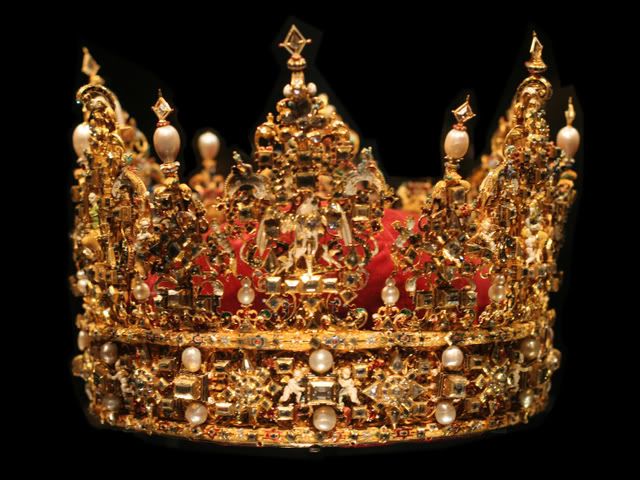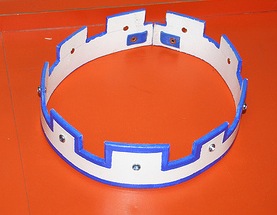Crown
Contents
Show your Fealty to the Crown!

Mundane definition
1. Throughout the Commonwealth realms The Crown is an abstract metonymic concept which represents the legal authority for the existence of any government. It evolved naturally as a separation of the literal crown and property of the nation-state from the person and personal property of the monarch. Similar concepts of "The Crown" also operate in other constitutional monarchies, in which (like the United Kingdom) the monarch is Head of State, but the actual governing of the nation is conducted according to the wishes of a democratically elected national legislature. The Holy Crown of Hungary is an example that similar concepts (although in symbolic rather than legal contexts) can survive even in a republic.
2.A crown is the traditional symbolic form of headgear worn by a monarch or by a deity, for whom the crown traditionally statue power, legitimacy, immortality, righteousness, victory, triumph, resurrection, honour and glory of life after death. In art the crown may be shown being offered to those on Earth by Angels. Apart from the traditional form, crowns also may be made of for example flowers, stars, oak leaves or thorns and be worn by others, representing what the coronation part aims to symbolize with the specific crown.
The Crown in Amtgard
1.Slang for the Monarchy usually of a kingdom.
2. The object it's self. A metal band or headdress used to signify station.
Crowning Traditions
Coronets
Lesser crowns or coronets are sometimes worn by Amtgarders usually at court or some official function. It is considered rude to wear a coronet if you are not a titled noble. It is also considered rude to wear a crown that is above your station or fancier than the Monarchs.
Examples of Crowns
- Lord; Typically a thin band of metal or leather, sometimes having a single point in the center front.
- Baronet; Some what larger than a lord's coronet, almost always having a single point in the front.
- Baron; traditionally bearing six points, as in heraldry.
- Count; Traditionally embattled, or topped with dags.
- Duke; Often has at least four points, and bears strawberry leaves.
- Archduke
- Grand Duke
Coronets in Heraldry and Britan

The main use is now actually not on the head (indeed, many people entitled to a coronet never have one made; the same even applies to some Monarchs' crowns, as in Belgium) but as a rank symbol in heraldry, adorning a coat of arms. In the United Kingdom, a peer wears his or her coronet on one occasion only: for a royal coronation, when it is worn along with coronation robes, equally standardized as a luxurious uniform. In the peerage of the United Kingdom, the design of a coronet shows the rank of its owner, as in German, French and various other heraldic traditions.
- The coronet of a duke (a silver-gilt circlet, chased as jewelled but not actually gemmed) has eight strawberry leaves of which five are seen in two-dimensional representations,
- that of a marquess has four strawberry leaves and four silver balls (known as "pearls", but not actually pearls), slightly raised on points above the rim, - of which three leaves and two balls are seen,
- that of an earl has eight strawberry leaves (four visible) and eight "pearls" raised on stalks, of which five are visible,
- that of a viscount has sixteen "pearls" touching one another, nine being seen in representation, and
- that of a baron (a plain silver-gilt circlet) has six "pearls" of which four are visible.
Since a person entitled to wear a coronet customarily displays it in their coat of arms above the shield and below the helm and crest, this can provide a useful clue as to the owner of a given coat of arms.